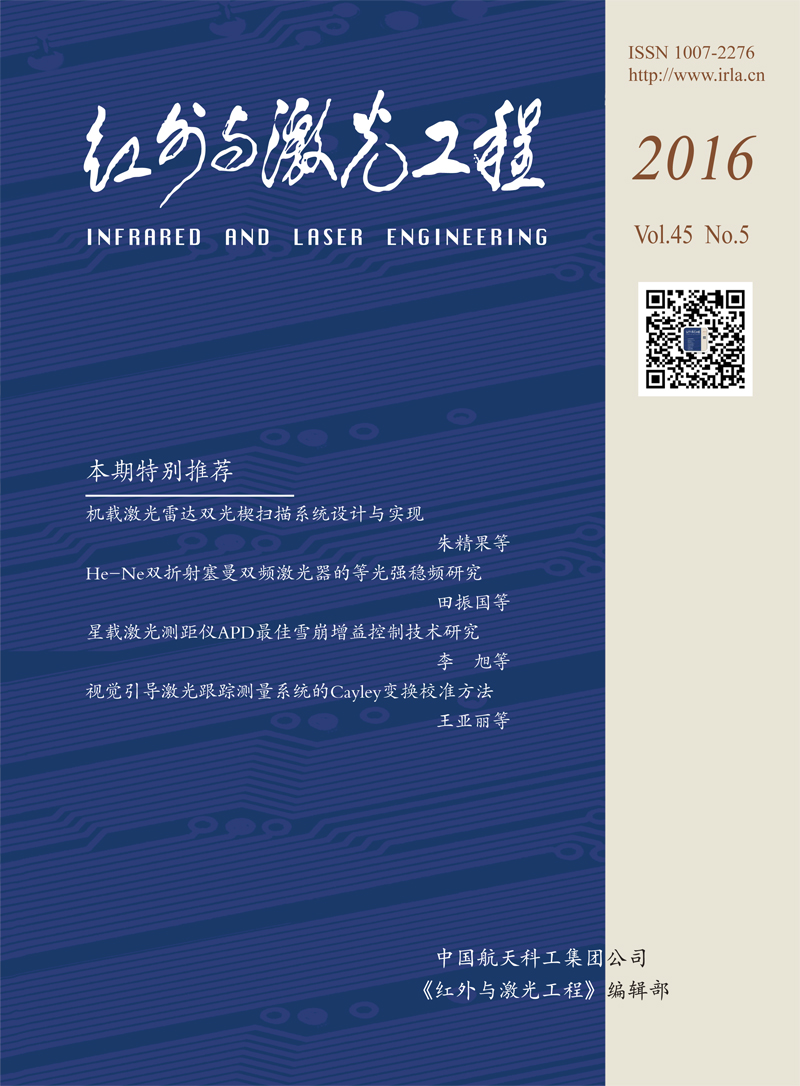Zhou Yanping, Xie Xiaolong, Liu Yang, Jin Hao, Yu Siyuan. Electron radiation experiment of CMOS image sensor[J]. Infrared and Laser Engineering, 2016, 45(5): 520006-0520006(4). doi: 10.3788/IRLA201645.0520006
| Citation:
|
Zhou Yanping, Xie Xiaolong, Liu Yang, Jin Hao, Yu Siyuan. Electron radiation experiment of CMOS image sensor[J]. Infrared and Laser Engineering, 2016, 45(5): 520006-0520006(4). doi: 10.3788/IRLA201645.0520006
|
Electron radiation experiment of CMOS image sensor
- Received Date: 2015-09-11
- Rev Recd Date:
2015-10-20
- Publish Date:
2016-05-25
-
Abstract
The effect of electron irradiation on CMOS image sensor was studied, focusing on average dark current and light intensity response. The CMOS image sensors, some in operating mode and the others in non-operating mode, were radiated simultaneously. The data were collected when the total dose of radiation reached 5103 rad, 1104 rad, 7104 rad, 1105 rad, 5105 rad, respectively. The results showed that, when the total dose of radiation exceed a threshold between 7104 rad and 1105 rad, dark current of the imager showed a basically linear relationship with the total dose of radiation. When concerning the light intensity response, for the imagers which were radiated in non-operating mode, radiation have no effect on the response; while for the imagers which were radiated in operating mode, with the total dose of radiation exceed a threshold, 7104 rad, the response curves shifted down and the slopes decreased with the total dose of radiation increased. In other words, radiation reduced sensitivity of the imagers. At last, the model of dark current versus total dose of electron radiation was developed after theoretical analysis. It is shown that after working in the space for a long time, CMOS image sensors are easily affected by the total dose effect of radiation, thus reasonable protection measures against radiation are needed.
-
References
|
[1]
|
Zhou Yanping, Hao Na, Yang Rui, et al. Electron radiation of LED[J]. Infrared and laser Engineering, 2013, 42(2): 454-485. (in Chinese)周彦平, 郝娜, 杨瑞, 等. 发光二极管电子辐照效应的研究[J]. 红外与激光工程, 2013, 42(2): 454-458. |
|
[2]
|
Luo B, Yang F, Yan L. Key technologies and research development of CMOS image sensors[C]//Geoscience and Remote Sensing(IITA-GRS), 2010 Second IITA International Conference on IEEE, 2010, 1: 322-325. |
|
[3]
|
Anelli G, Anghinolfi F, Rivetti A. A large dynamic range radiation-tolerant analog memory in a quarter-micron CMOS technology[J]. Nuclear Science, IEEE Transactions on, 2001, 48(3): 435-439. |
|
[4]
|
Johnston A H. Radiation damage of electronic and optoelectronic devices in space[C]//Proceedings of the 4th International Workshop on Radiation Effects on Semiconductor Devices for Space Application, 2000. |
|
[5]
|
Bogaerts J, Dierickx B, Mertens R. Random telegraph signals in a radiation-hardened CMOS active pixel sensor[J]. Nuclear Science, IEEE Transactions on, 2002, 49(1): 249-257. |
|
[6]
|
Tan J, Buttgen B, Theuwissen A J P. Radiation effects on CMOS Image Sensors due to X-Rays[C]//Advanced Semiconductor Devices Microsystems (ASDAM), 20108th International Conference on IEEE, 2010: 279-282. |
|
[7]
|
Backhaus M. Radiation-hard active CMOS pixel sensors for HL-LHC detector upgrades[J]. Journal of Instrumentation, 2015, 10(2): C0203. |
|
[8]
|
Zhou Yanping, Wang Xiaoming, Chang Guolong, et al. Radiation experiment of CMOS image sensor[J]. Infrared and laser Engineering, 2011, 40(7): 1270-1273. (in Chinese)周彦平, 王晓明, 常国龙, 等. CMOS图像传感器的辐射实验[J]. 红外与激光工程, 2011, 40(7): 1270-1273. |
-
-
Proportional views

-









 DownLoad:
DownLoad: